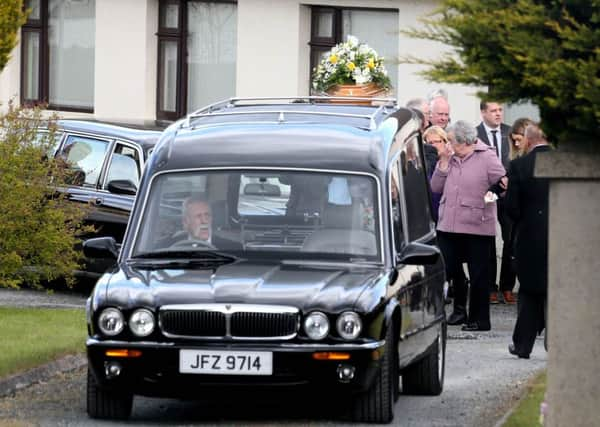Inquest hears warning over the dangers of invisible gas


Group commander Victor Spence said people were not fully aware of the dangers of the odourless and invisible gas.
An inquest into the death of William Stockdale, 60, from carbon monoxide poisoning in Newcastle in April, heard he had no alarms fitted and an engineer had advised him not to use the oil boiler in his house in the days before his death.
Advertisement
Hide AdAdvertisement
Hide AdHe had recently suffered a heart attack and coronary disease contributed to his death.
Mr Stockdale had earlier that month been admitted to hospital and inflammatory markers were picked up in his blood, but he was eager to go home and was discharged.
He was taken ill at home and was unable to speak properly. While a paramedic was treating him he collapsed.
The medical technician, Paul Kennedy, was later also taken ill.
Advertisement
Hide AdAdvertisement
Hide AdCoroner Paddy McGurgan quizzed the fire service about the dangers posed by the toxic gas, which depletes the oxygen available to organs.
Mr Spence said: “We are attending more on a regular basis now. We would recommend people fit carbon monoxide detectors.”
Mr Spence added: “People are not fully aware of the dangers.”
John Vaughan, of the Health and Safety Executive (HSENI), said there had been an increase in the reporting of carbon monoxide incidents because carbon monoxide detectors were being used more.
Advertisement
Hide AdAdvertisement
Hide AdThe inquest was told a bird had probably nested in the flue and blocked it, causing the gas to leak from joins in the pipe into the house.
Martin McCourt, an engineer who checked the boiler just before Mr Stockdale died, said he smelled smoke and advised him to have his chimney swept.
He disconnected the boiler and said he told Mr Stockdale not to use it while he arranged to replace it the following week.
But he did not put labels on the old unit warning it was dangerous. He had been his friend for many years and trusted him to follow his advice.
Advertisement
Hide AdAdvertisement
Hide AdAfter examining the unit and removing baffle plates, they hammered one straight and put it back into the boiler.
A fireman said he felt heat from part of the installation after the death, suggesting it had been used. But Mr McCourt insisted Mr Stockdale had not turned the heating on.
The victim was checked at the emergency department at Daisy Hill Hospital in the days before he died. Doctor Cailin O’Reilly said a test for carbon monoxide in his blood showed elevated levels.
But he was not displaying any symptoms and she suspected another heart attack or a complication from his recent cardiac surgery rather than carbon monoxide poisoning.
Advertisement
Hide AdAdvertisement
Hide AdNew systems have been put in place since the death to flag up high levels to medics.
Dr O’Reilly said: “Looking back now of course, knowing that the cause of death of carbon monoxide poisoning, the only change that I would have done is to question the family would there be a possible source of carbon monoxide, but in accident and emergency Mr Stockdale remained stable and was discharged.”